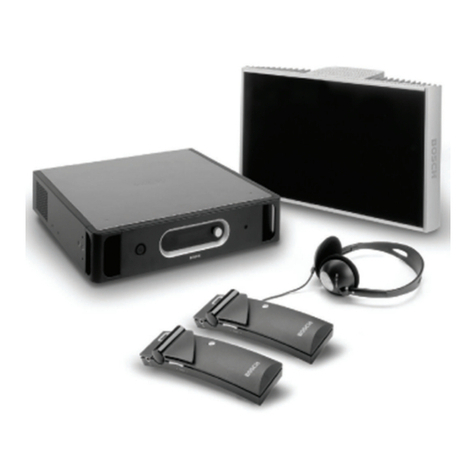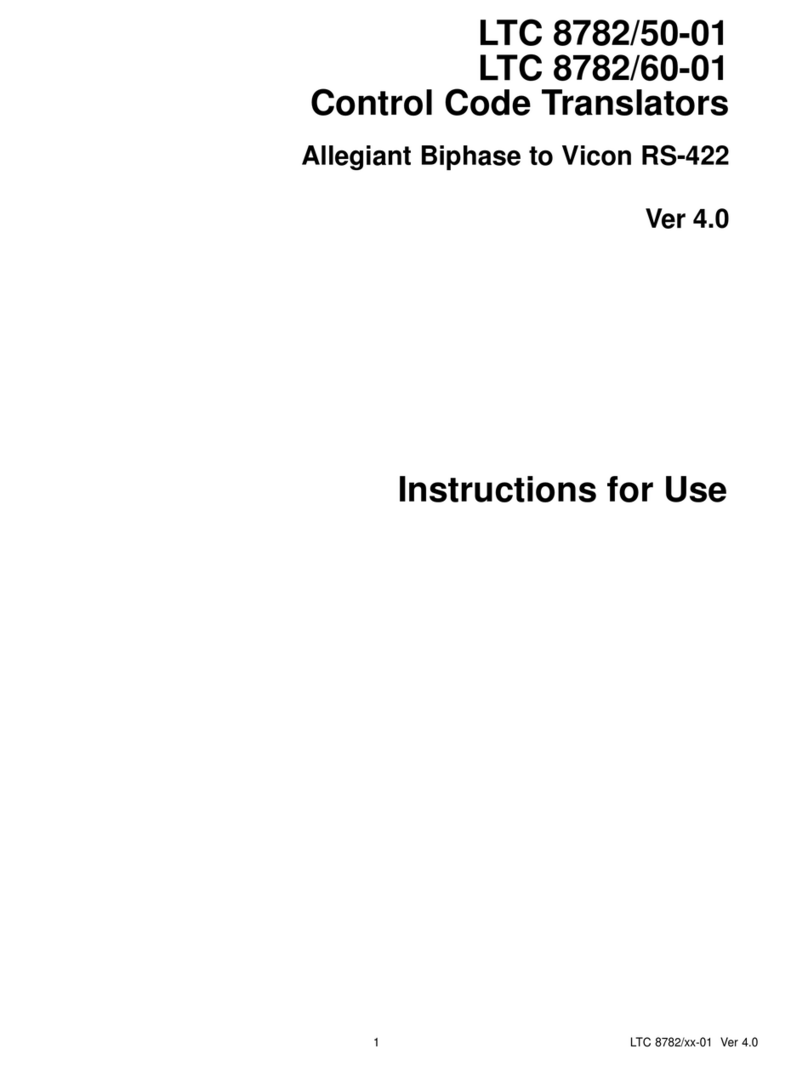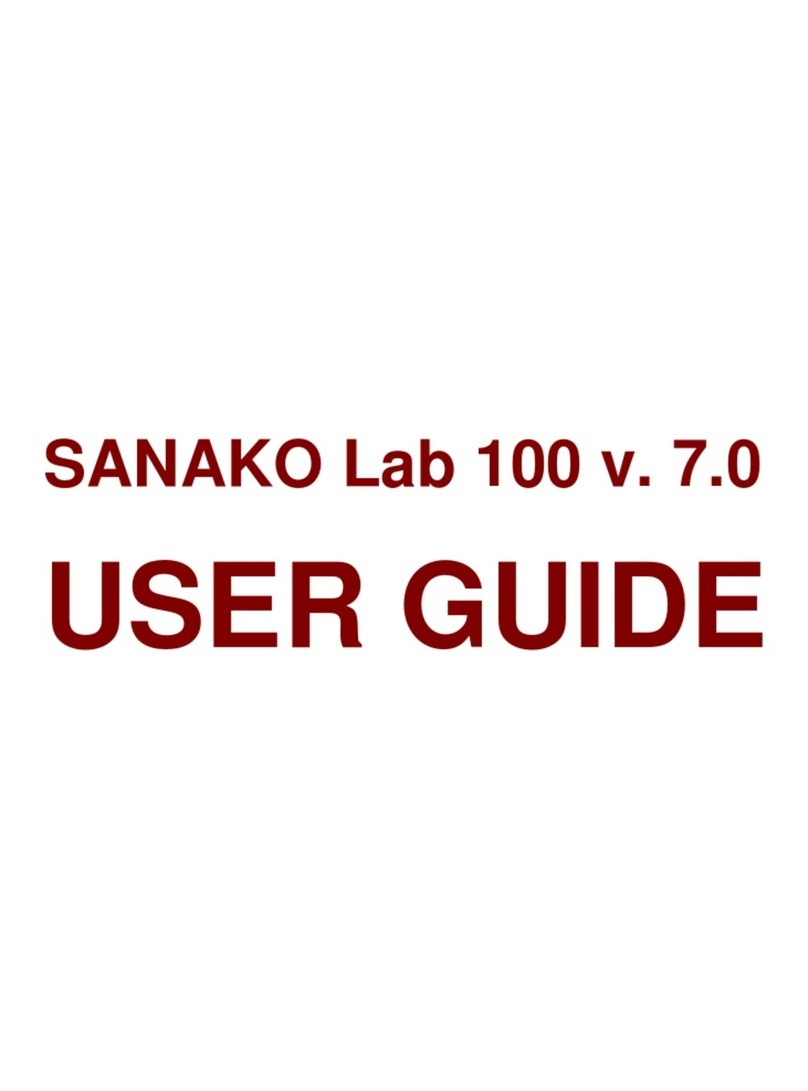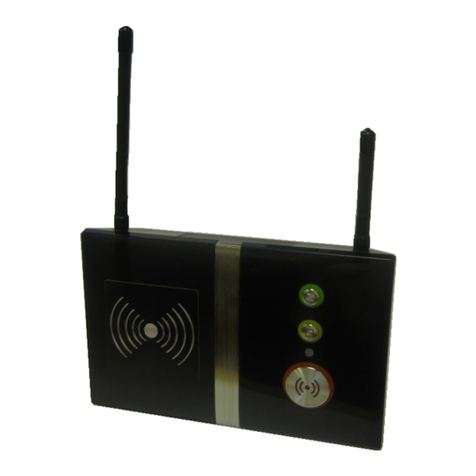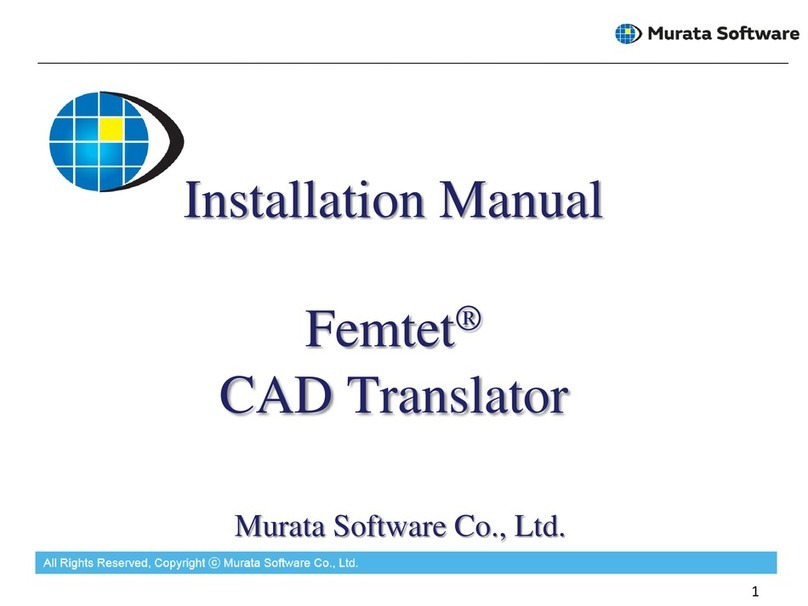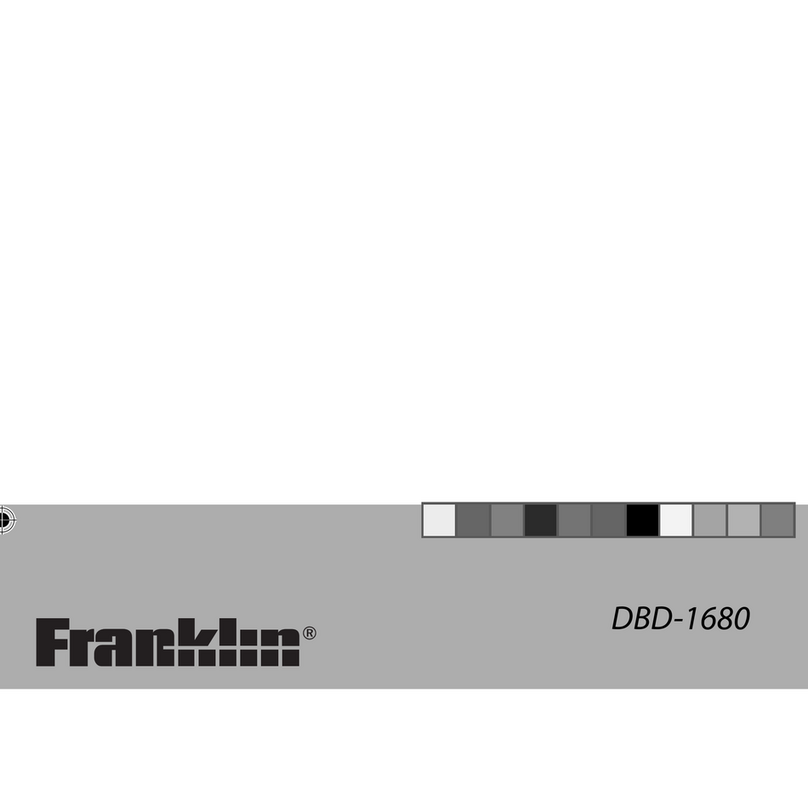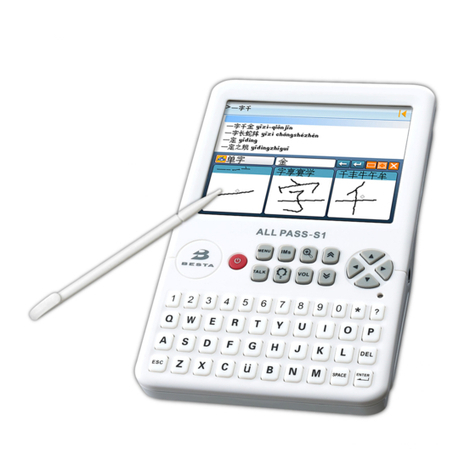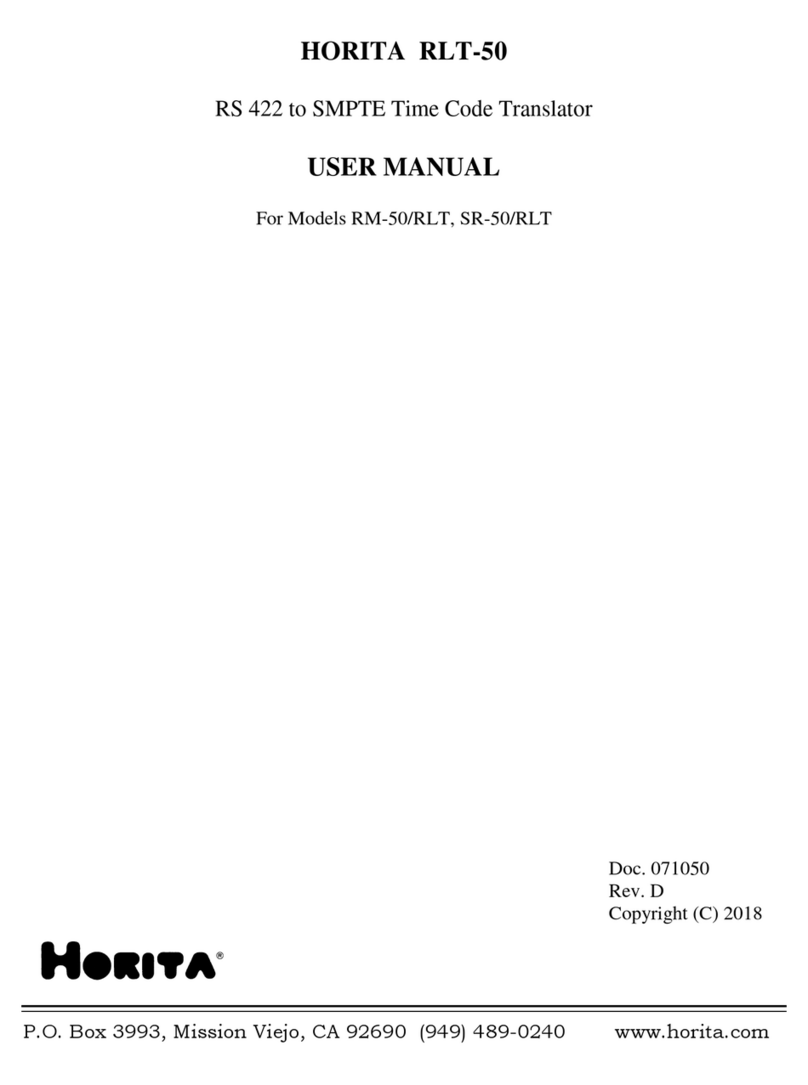Bosch INTEGRUS User manual

INTEGRUS
Wireless Language Distribution System
en User manual


INTEGRUS Table of contents | en 3
Bosch Security Systems B.V. User manual 2023-01 | V01 |
Table of contents
1Safety 5
2About this manual 6
2.1 Purpose 6
2.2 Intended audience 6
2.3 Related documentation 6
2.4 Use latest software 6
2.5 Alerts and notice signs 7
2.6 Copyright and disclaimer 7
2.7 Document history 7
3System overview 8
3.1 Transmitter OMNEO 10
3.2 Radiators 13
3.2.1 Charging units 15
3.3 Receivers 17
3.3.1 Normal operation 18
3.4 Receiver Headphones 19
4Planning 20
4.1 IR radiation 20
4.2 Aspects of Infrared distribution systems 20
4.2.1 Directional sensitivity of the receiver 20
4.2.2 The footprint of the radiator 21
4.2.3 Ambient lighting 23
4.2.4 Objects, surfaces and reflections 24
4.2.5 Position the radiators 24
4.2.6 Overlapping footprints and black spots 27
4.3 Plan an Integrus infrared radiation system 29
4.3.1 Rectangular footprints 29
4.3.2 Plan radiators 30
4.3.3 Cabling 31
5Installation 32
5.1 Transmitter OMNEO 32
5.2 Medium and high power radiators 32
5.2.1 Attach mounting plate to the suspension bracket 33
5.2.2 Attach the suspension bracket 34
5.2.3 Mount radiator on a floor stand 35
5.2.4 Mount radiator on a wall 35
5.2.5 Mount radiator on a ceiling 36
5.2.6 Mount radiator on horizontal surfaces 37
5.2.7 Secure the radiator with a safety cord 37
5.3 Integrus receivers 37
5.4 Integrus Charging Units 37
6Connection 39
6.1 Power the Transmitter OMNEO 39
6.2 Connect to another transmitter 40
6.3 Connect the radiators 41
7Configuration 42
7.1 Transmitter OMNEO 42
7.1.1 First time login 42

4en | Table of contents INTEGRUS
2023-01 | V01 | User manual Bosch Security Systems B.V.
7.1.2 Activate an INT-L1AL Additional language license 42
7.1.3 Return all INT-L1AL licenses 43
7.1.4 Carrier management 43
7.2 Integrus Radiators 44
7.2.1 Set the output power selection switch 44
7.2.2 Set the delay switches 44
7.3 Determine the radiator delay switch positions 44
7.3.1 System with one transmitter 45
7.3.2 System with two or more transmitters in one room 48
7.3.3 Systems with more than 4 carriers and a radiator under a balcony 50
8Testing 51
8.1 Integrus Receiver 51
8.2 Test the coverage area 51
9Maintenance 53
10 Technical data 54
10.1 Electrical 54
10.1.1 Overall system characteristics 54
10.1.2 Transmitter 54
10.1.3 Radiators and Accessories 54
10.1.4 Receivers, battery packs, and chargings units 55
10.2 Mechanical 56
10.2.1 Transmitter 56
10.2.2 Radiators and Accessories 56
10.2.3 Receivers, Battery Packs and Charging Units 57
10.3 Environmental 58
10.3.1 Overall system conditions 58
10.3.2 Transmitter 58
10.4 Rules and Standards 60
10.4.1 Overall system conformance 60
10.5 Guaranteed rectangular footprints 60
10.5.1 Metric values of radiators with hardware version higher than 2.00 60
10.5.2 Imperial values of radiators with hardware version higher than 2.00 62
10.5.3 Metric values of radiators with hardware version lower than 2.00. 64
10.5.4 Imperial values of radiators with hardware version lower than 2.00. 66
11 Support services and Bosch Academy 68

INTEGRUS Safety | en 5
Bosch Security Systems B.V. User manual 2023-01 | V01 |
1 Safety
Prior to installing or operating the products, always read the installation instructions in
section Installation and the Safety Instructions which are provided with the mains powered
products.
!
Warning!
To prevent possible hearing damage, do not listen at high volume levels for long periods.
FCC Supplier’s Declaration of Conformity
Changes or modifications not expressly approved by the party responsible for compliance
could void the user's authority to operate the equipment.
Note: This equipment has been tested and found to comply with the limits for a Class A digital
device, pursuant to part 15 of the FCC Rules. These limits are designed to provide reasonable
protection against harmful interference when the equipment is operated in a commercial
environment. This equipment generates, uses, and can radiate radio frequency energy and, if
not installed and used in accordance with the instruction manual, may cause harmful
interference to radio communications. Operation of this equipment in a residential area is
likely to cause harmful interference in which case the user will be required to correct the
interference at his own expense.

6en | About this manual INTEGRUS
2023-01 | V01 | User manual Bosch Security Systems B.V.
2 About this manual
2.1 Purpose
The purpose of this document is to provide information required for installing, configuring,
operating, maintaining and troubleshooting an Integrus Language Distribution System.
2.2 Intended audience
This document is intended for installers and users of an Integrus Language Distribution
System.
2.3 Related documentation
– DICENTIS Installation and configuration manuals. Refer to the product related information
at: www.boschsecurity.com.
2.4 Use latest software
Before operating the device for the first time, make sure that you install the latest applicable
release of your software version. For consistent functionality, compatibility, performance, and
security, regularly update the software throughout the operational life of the device. Follow
the instructions in the product documentation regarding software updates.
The following links provide more information:
– General information: https://www.boschsecurity.com/xc/en/support/product-security/
– Security advisories, that is a list of identified vulnerabilities and proposed solutions:
https://www.boschsecurity.com/xc/en/support/product-security/security-advisories.html
Bosch assumes no liability whatsoever for any damage caused by operating its products with
outdated software components.

INTEGRUS About this manual | en 7
Bosch Security Systems B.V. User manual 2023-01 | V01 |
2.5 Alerts and notice signs
Four types of signs can be used in this manual. The type is closely related to the effect that
may be caused if it is not observed. These signs - from least severe effect to most severe
effect - are:
i
Notice!
Containing additional information. Usually, not observing a ‘notice’ does not result in damage
to the equipment or personal injuries.
!
Caution!
The equipment or the property can be damaged, or persons can be lightly injured if the alert
is not observed.
!
Warning!
The equipment or the property can be seriously damaged, or persons can be severely injured
if the alert is not observed.
Danger!
Not observing the alert can lead to severe injuries or death.
2.6 Copyright and disclaimer
All rights reserved. No part of this document may be reproduced or transmitted in any form by
any means, electronic, mechanical, photocopying, recording, or otherwise, without the prior
written permission of the publisher. For information on getting permission for reprints and
excerpts, contact Bosch Security Systems B.V..
The content and illustrations are subject to change without prior notice.
2.7 Document history
Release date Documentation version Reason
2023-01 V01 Release of INT-TXO.

8en | System overview INTEGRUS
2023-01 | V01 | User manual Bosch Security Systems B.V.
3 System overview
INTEGRUS is a system for wireless distribution of audio signals through infrared radiation. It
can be used in a simultaneous interpretation system for international conferences where
multiple languages are used. To enable all participants to understand the discussion,
interpreters simultaneously translate the speaker's language as required. These
interpretations are distributed throughout the conference venue, and participants select their
preferred language and listen to it through headphones.
13
11
812
16
7
6
6
5
3
2
1
15
10
14
9
10
10
4
Figure3.1: Typical DICENTIS Conference System setup
A typical DICENTIS Conference System consists of:
1. Hall display of the conference room:
– Shows a synoptic layout of the meeting or meeting notes.
2. Client PC:

INTEGRUS System overview | en 9
Bosch Security Systems B.V. User manual 2023-01 | V01 |
– Can be used to: Manage meetings, prepare meetings and configure the system.
3. DICENTIS System server:
– The heart of the system. It licenses functionality, configures and controls the system.
4. Optional video camera (Onvif Profile-S compatible cameras, Sony IP cameras via CGI
commands, or Panasonic HD Integrated IP) + external power supply:
– Captures the image of a speaking participant.
5. Ethernet switch:
– Ethernet switch with PoE on some ports.
- Routes the system data via Ethernet.
- Provides power to the DICENTIS devices via PoE.
6. CAT‑5e Ethernet cable (minimum requirement).
7. Multimedia device:
– This device is used via a “Power over Ethernet” (PoE) Ethernet switch.
Note: Only one DICENTIS device should be connected here.
8. Powering switch:
– Used to increase the number of DICENTIS devices connected to the system.
9. Audio processor and powering switch:
– Controls the system audio, routes audio from and to the system and supplies power
to the DICENTIS devices.
10. System Network Cable:
– Connects DICENTIS devices, the Audio processor and powering switch, and one or
more Powering switches to each other.
11. Multimedia device:
– This device is used for “system power on/off”. It is always connected to the powered
socket of the Audio processor and powering switch or Powering switch.
Note: Only one DICENTIS Multimedia device should be connected here.
12. Transmitter OMNEO:
– This device allows for wireless language distribution.
13. Flush base device:
– This device is intended for use in flush-mounted solutions, adding a number of
functions.
14. Interpreter Desk:
– Provides extensive facilities for professional interpretation for the DICENTIS
Conference System.
Note: A maximum of 10 desks can be installed per booth.
15. Flush language selector:
– This device allows the participants to easily choose their preferred language.
16. IR distribution:
– Through infrared distribution, the signals from the INT-TXO are transmitted to the
radiators in the room.

10 en | System overview INTEGRUS
2023-01 | V01 | User manual Bosch Security Systems B.V.
The INTEGRUS Wireless Language Distribution System comprises one or more of the
following:
Transmitter OMNEO
The transmitter is the core of the INTEGRUS system. The INT-TXO Transmitter OMNEO
connects directly to the DICENTIS conference system. This transmitter has four infrared
language channels (0-3). The number of channels can be extended through the INT-L1AL.
Infrared radiators
Two radiators are available:
– The LBB4511/00 Radiator for medium size area is a medium-power radiator for small and
medium conference venues
– The LBB4512/00 Radiator for large size area is a high-power radiator for medium and
large conference venues.
The radiators can be mounted on walls, ceilings or floor stands.
Infrared receivers
Three multi-channel infrared receivers are available:
– The LBB4540/04 Pocket receiver for 4 languages for 4 audio channels
– The LBB4540/08 Pocket receiver for 8 languages for 8 audio channels
– And the LBB4540/32 Pocket receiver for 32 languages for 32 audio channels.
The receivers can operate with a rechargeable NiMH battery pack or with disposable batteries.
The charging circuitry is incorporated in the receiver.
Charging equipment
This equipment is available for charging and storing 56 infrared receivers. Two versions are
available:
– The LBB4560/00 Charger case for 56x LBB4540 for portable systems
– And the LBB4560/50 Charger cabinet for 56x LBB4540 for permanent systems
3.1 Transmitter OMNEO
The INT-TXO is the central element in the INTEGRUS system that allows INTEGRUS to interact
with the DICENTIS Conference System. The INT-TXO modulates the signals into carrier waves
and transmits them to the radiators in the room.
When connected to a DICENTIS system, the Transmitter OMNEO is fully controlled by
DICENTIS and does not require any configuration.
The INT-TXO can be switched to the slave mode to act as a repeater of another INT-TXO. In
this case, the signal is received through the coaxial input and synchronizes with the master
INT-TXO. The slave mode is enabled through a switch on the rear of the device.
INT-L1AL 1 Additional language license
In addition to the four standard channels, you can add 28 more language channels to the INT-
TXO through the INT-L1AL 1 Additional language license. The Transmitter OMNEO allows for a
maximum of 32 channels.

INTEGRUS System overview | en 11
Bosch Security Systems B.V. User manual 2023-01 | V01 |
Front view
12
3
1Ventilation inlet.
2LED Indication:
– Off: Power off.
– Green: Power on.
– Blinking green: Transmitter not (yet) connected to source.
– Amber: Standby mode.
– Blinking amber: Standby mode and not yet connected to DICENTIS or DanteTM.
– Blinking green/amber: Factory mode, needs to upgrade.
3LED Indication:
– Off: Power off.
– Green: Master mode.
– Blinking green: For a future release.
– Amber: Slave mode.
– Blinking amber: Transmitter not (yet) connected to a radiator.
– Blinking green/amber: General error.

12 en | System overview INTEGRUS
2023-01 | V01 | User manual Bosch Security Systems B.V.
Rear view
12
5
34
6
8
7910
1Power supply.
2Network 1: Supports powering through DICENTIS or PoE.
3Network 2: Supports powering through DICENTIS.
The LEDs next to the network connectors share the same behavior:
– Red/green or amber/green blinking: The transmitter needs to be upgraded.
– Yellow: Network activity present.
– Green: Network speed of 1GB.
– Orange: Network speed of 100MB.
4HF In: Slave input. BNC connector that accepts an HF signal from a transmitter in
Master mode.
5Mode Master/Slave switch. The default mode is Master.
6HF Out 1-6: Six high-frequency BNC connectors, used to connect to the radiators. Up to
30 radiators can be connected in a loop to each output.
7Reset button: Press and hold for 10 seconds to reset the device to factory settings.
8Emergency terminal block socket for distribution of emergency messages to all
channels.
9Audio In: XLR socket distribute audio to all channels.
10 Chassis ground.

INTEGRUS System overview | en 13
Bosch Security Systems B.V. User manual 2023-01 | V01 |
3.2 Radiators
The radiators accept the carrier signals generated by the transmitter and emit infrared
radiation carrying up to 32 audio distribution channels. The radiators are connected to one or
more of the 6 HF BNC outputs of the IR transmitter. Connect a maximum of 30 radiators to
each of these outputs by means of loop-through connections.
The LBB4511/00 has an infrared output of 21Wpp, while the LBB4512/00 has an infrared
output of 42Wpp. Both select automatically the mains power voltage and switch on when the
transmitter is switched on.
The radiator equalizes automatically the attenuation of the signal by the cable. The radiator
initializes the equalization when the radiator is supplied with power and the transmitter is
switched on. The red LED flashes for a brief period of time to indicate that the initialization is
in progress.
When not receiving carrier waves, the radiators switch to standby mode. The temperature
protection mode is also available. It automatically switches the radiators from full to half
power or from half power to standby if the temperature of the IREDs becomes too high.
Front view
1 21 2
1Red LED 2Amber LED Status
On Off Standby mode.
Off On Transmitting.
Blinking On At switch-on: Initializing signal equalization.
During operation: Temperature protection
mode.
On On IRED panel failure.

14 en | System overview INTEGRUS
2023-01 | V01 | User manual Bosch Security Systems B.V.
i
Notice!
The indicator LEDs are positioned behind the semi-transparent cover. For this reason, the
LEDs are only visible when ON.
i
Notice!
When in operation, the radiators might feel warm to the touch. This is the expected behavior,
and does not indicate a radiator fault or malfunction.
Side and rear view
3
2
1
4
5
6
7
1Safety eye: Used to mount a safety cord for extra security.
2Safety eyehole: Tapped hole to mount the safety eye.
3Bracket hole: Tapped hole to mount the suspension bracket.
4Mains input: Male Euro mains connector. The radiators selection automatically the
mains voltage.
5IR signal input/loop-through: Two HF BNC connectors for connecting the radiator to
the transmitter and for loop-through connection to other radiators. A built-in switch in
the BNC connectors achieves automatic cable termination.
6Output power selection switch: Switch the radiators between full and half-power
operation.
7Delay compensation switches: Two switches in the 10-position to compensate for
differences in cable lengths to the radiators.

INTEGRUS System overview | en 15
Bosch Security Systems B.V. User manual 2023-01 | V01 |
Suspension bracket and mounting plate of LBB4511/00 and LBB4512/00
424
3
3
5
5
1
6
7
6
7
1Mounting plate: Accessory plate used in case of mounting on a floor stand or of wall-
mounting.
Depending on the way of mounting, install the mounting plate at one or the other side
of the bracket.
2Mounting plate hole: Tapped holes to mount the mounting plate.
3Radiator hole: Holes for bolts.
4Mounting hole: Holes for screws to mount the bracket to the ceiling or on horizontal
surfaces.
5Bolt: Bolt to mount the suspension bracket to the radiator.
6Screw: Screw to mount the mounting plate to the suspension bracket.
7Washer
Refer also to
Attach mounting plate to the suspension bracket, page 33
.
Refer to
– Attach mounting plate to the suspension bracket, page 33
3.2.1 Charging units
The charging units can recharge up to 56 receivers at once. The charging unit contains the
power supply with automatic mains voltage selection. The charging electronics and a charging
indicator LED are integrated in each receiver. The charging circuitry checks if a battery pack is
present and controls the charging process.
Two versions are available, which are functionally identical:
– LBB4560/00 Charger case for 56x LBB4540 for portable systems.

16 en | System overview INTEGRUS
2023-01 | V01 | User manual Bosch Security Systems B.V.
– LBB4560/50 Charger cabinet for 56x LBB4540 for permanent systems. Suitable for either
tabletop or wall-mounted use.
1
2
3
Figure3.2: LBB4560 Charging unit
1Mains input: Male Euro mains socket. The charging unit has automatic mains voltage
selection. A mains cable is provided.
2Mains on/off switch
3Receiver positions: One charging unit can charge up to 56 receivers simultaneously.
Make sure that the charging unit is connected to the mains and that it is switched on. Place
the receivers firmly in the charging compartments. The charging indicator on the power on/off
button of all receivers should turn on. The indicator shows the charging status of each
receiver:
LED color Charging status
Green Charging completed.
Red Charging in progress.
Red blinking Error status.
Off Charger switched off or receiver not properly inserted.

INTEGRUS System overview | en 17
Bosch Security Systems B.V. User manual 2023-01 | V01 |
i
Notice!
These charging units are only intended to charge LBB4540 receivers with an LBB4550/10
battery pack. You cannot charge other receiver types with the LBB4560 charging units, nor
can you use other charging units to charge LBB4540 receivers.
It is preferred to switch on the charging unit before inserting the receivers. Receivers can be
inserted or removed without damage while the charging unit is switched on.
Charge the battery pack to full capacity before using them for the first time.
The charger always applies fast charge during the first 10 minutes after inserting a receiver.
Inserting the receiver multiple times with a fully charged battery pack should therefore be
avoided, as this will damage the battery pack.
Continuously charging the receiver will not damage the receiver or battery pack. Receivers
can therefore safely be left in their charging positions when they are not used.
3.3 Receivers
LBB4540 receivers are available for 4, 8 or 32 channels. They can operate with a rechargeable
NiMH battery pack or with disposable batteries. The receivers have controls for channel
selection, volume adjustment, and an on/off push button. All receivers have a 3.5mm
(0.14inch) stereo jack output socket for mono or stereo headphones.
An LCD display shows the channel number and indicators for signal reception and low battery
power.
The charging circuitry is included in the receiver.
i
Notice!
When you put the receiver into storage for a long period, make sure:
- That the humidity is less than 60%
- That the temperature is less than 25°C.
- That the receiver is re-charged every few months.
2
1
4
5
8
7
9
6
3
LBB4540/XX
0952XXX44455550001
WK: 1531
HW**/**
Made in China
Figure3.3: Receiver, front view and back view with open battery compartment

18 en | System overview INTEGRUS
2023-01 | V01 | User manual Bosch Security Systems B.V.
1Charging indicator LED: Used in combination with the charging equipment.
2Headphone connector: A 3.5 mm (0.14 inch) stereo jack output socket for the
headphone, with integrated Stand-by/Off-switch.
3LCD Display: A two digit display showing the selected channel. An antenna symbol is
visible when the receiver picks up an infra red signal of adequate quality. A battery
symbol is visible when the battery pack or the batteries are almost empty.
4Volume control: A slider to adjust the volume.
5Channel selector: An up/down switch to select an audio channel. The channel number
is shown on the LCD display.
6On/Off button: When a headphone is connected, the receiver switches to Stand-by
state. Pressing the On/Off button switches the receiver from Stand-by to On. To switch
back to Stand-by, press and hold the button for approx. 2 seconds. When the
headphone is removed, the receiver switches automatically to the Off-state.
7Battery pack connector: This connection is used to connect the battery pack to the
receiver. Charging is automatically disabled when this connector is not used.
8Charging contacts: Used in combination with the charging equipment to recharge the
battery pack (if used)
9Battery pack or disposable batteries: Either a rechargeable NiMH battery pack
(LBB4550/10) or two disposable A‑-size 1.5V batteries.
3.3.1 Normal operation
Connect a headphone for the receiver to operate:
1. Connect a headphone to the receiver.
2. Push the on/off button.
3. Push the volume button up/down to increase/decrease the volume.
4. Push the channel button up/down to select another channel. The highest channel number
automatically matches the number of channels that has been set on the transmitter.
5. Push the on/off button for more than 2 seconds to put the receiver manually into standby
mode.
The display of the receiver can show:
– The channel number
– A battery symbol when the batteries or the battery pack is almost empty
– An antenna symbol when the signal reception is okay. No antenna symbol when no signal
reception.
During short interruptions in the reception, the receiver mutes the headphones output.
In case standby mode is enabled, the receiver automatically switches to standby mode when
no adequate IR signal is detected for more than 1 minute (e.g. when a delegate leaves the
conference room). When the receiver is in standby mode, press the on button to return to
normal operation.
!
Warning!
When the receiver is not used, disconnect the headphones. This will make sure that the
receiver is totally switched off and that no energy is consumed from the batteries or the
battery pack.

INTEGRUS System overview | en 19
Bosch Security Systems B.V. User manual 2023-01 | V01 |
3.4 Receiver Headphones
The headphones connect with the receivers via a 3.5 mm (0.14inch) stereo jack connector.
Suitable headphone types are:
– LBB3441/10 Under the chin stereo headphones
– LBB3442/00 Single earphone (mono)
– LBB3443/00 Stereo headphones
– HDP‑ILN Induction Loop Neckband
– HDP‑LWN Lightweight Neckband headphone
– Or any other compatible type (see Technical Data)

20 en | Planning INTEGRUS
2023-01 | V01 | User manual Bosch Security Systems B.V.
4 Planning
4.1 IR radiation
The Integrus system is based on transmission by modulated infrared radiation. Infrared
radiation forms part of the electromagnetic spectrum, which is composed of visible light, radio
waves and other types of radiation. It has a wavelength just above that of visible light. Like
visible light, it is reflected from hard surfaces, yet passes through translucent materials such
as glass. The infrared radiation spectrum in relation to other relevant spectra is shown in the
next figure.
100
75
1
42
50
25
0400 500 600 700 800
5 3
900 1000 nm
%
Figure4.1: Infrared radiation spectrum in relation to other spectra
1Daylight spectrum
2Sensitivity of the human eye
3IR radiator
4Sensitivity of IR sensor
5Sensitivity of IR sensor with daylight filter
4.2 Aspects of Infrared distribution systems
A good infrared distribution system ensures that all delegates in a conference venue receive
the distributed signals without disturbance. This is achieved by using enough radiators, placed
at well planned positions, so that the conference venue is covered with uniform IR-radiation of
adequate strength. There are several aspects that influence the uniformity and quality of the
infrared signal, which must be considered when planning an infrared radiation distribution
system. These are discussed in the next sections.
4.2.1 Directional sensitivity of the receiver
The sensitivity of a receiver is at its best when it is aimed directly towards a radiator. The axis
of maximum sensitivity is tilted upwards at an angle of 45 degrees (see the next figure).
Rotating the receiver will decrease the sensitivity. For rotations of less than +/- 45 degrees
this effect is not large, but for larger rotations the sensitivity will decrease rapidly.
Other manuals for INTEGRUS
6
Table of contents
Other Bosch Electronic Dictionary manuals
Popular Electronic Dictionary manuals by other brands
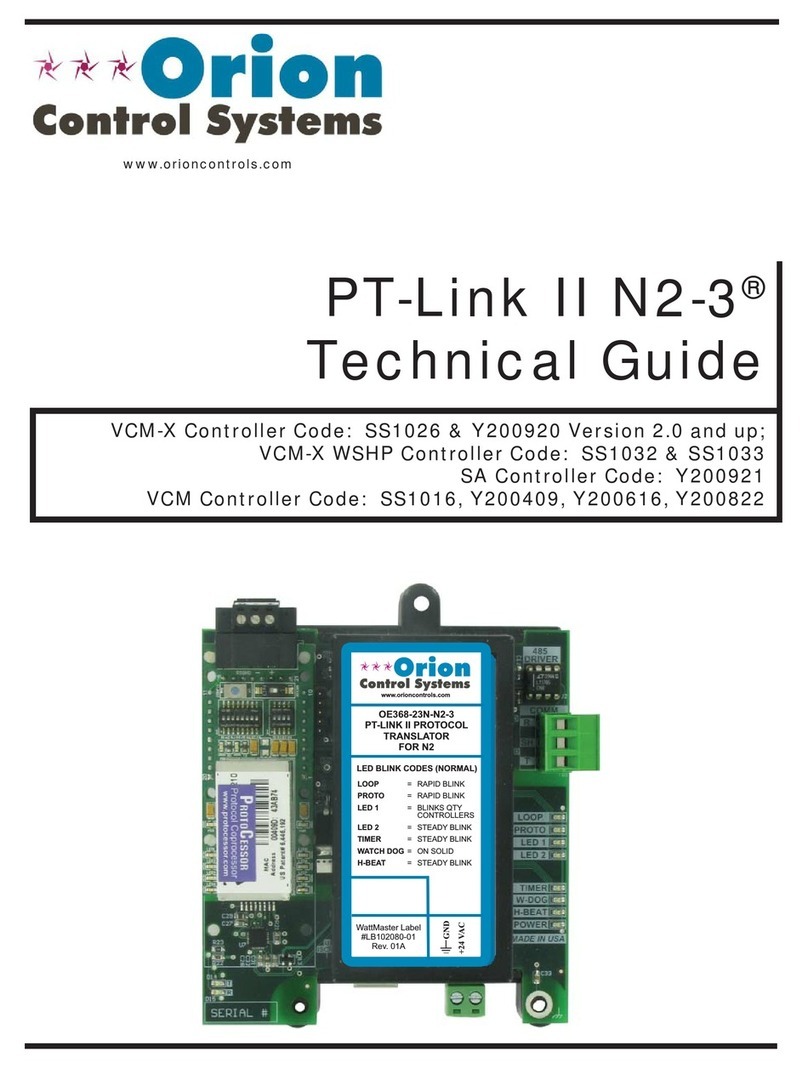
Orion Control Systems
Orion Control Systems PT-Link II N2-3 Technical guide

Partner
Partner ER400 Professional user manual
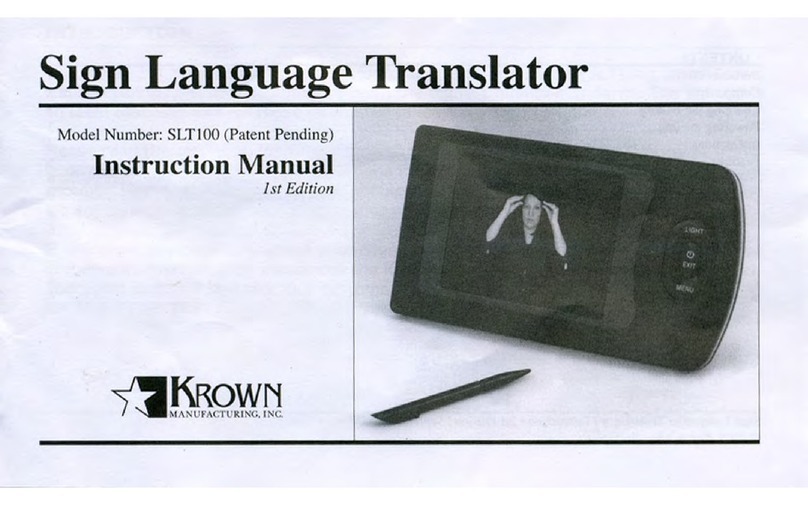
Krown
Krown SLT100 instruction manual
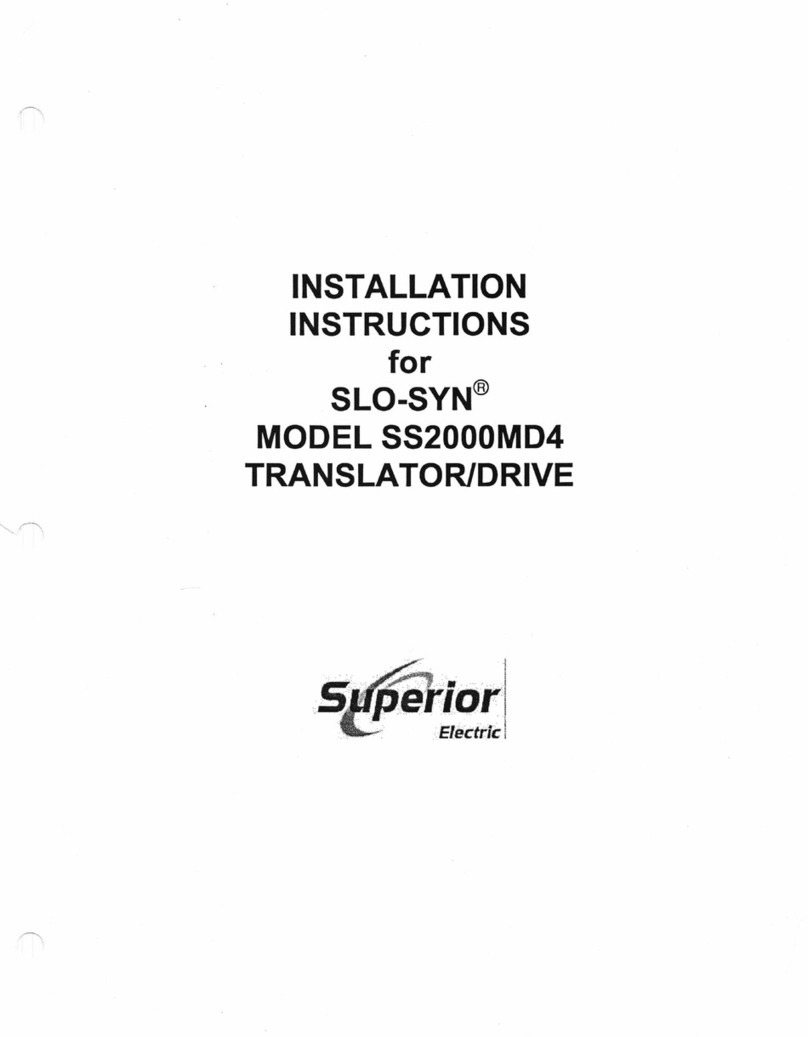
Superior Electric
Superior Electric SLO-SYN SS2000MD4 installation instructions

Franklin
Franklin DMQ-570 user guide
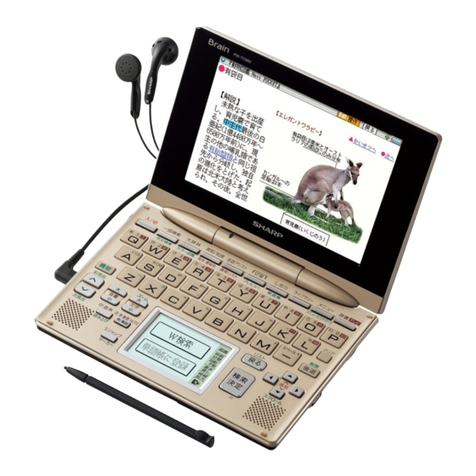
Sharp
Sharp PW-TC980 Quick reference guide
